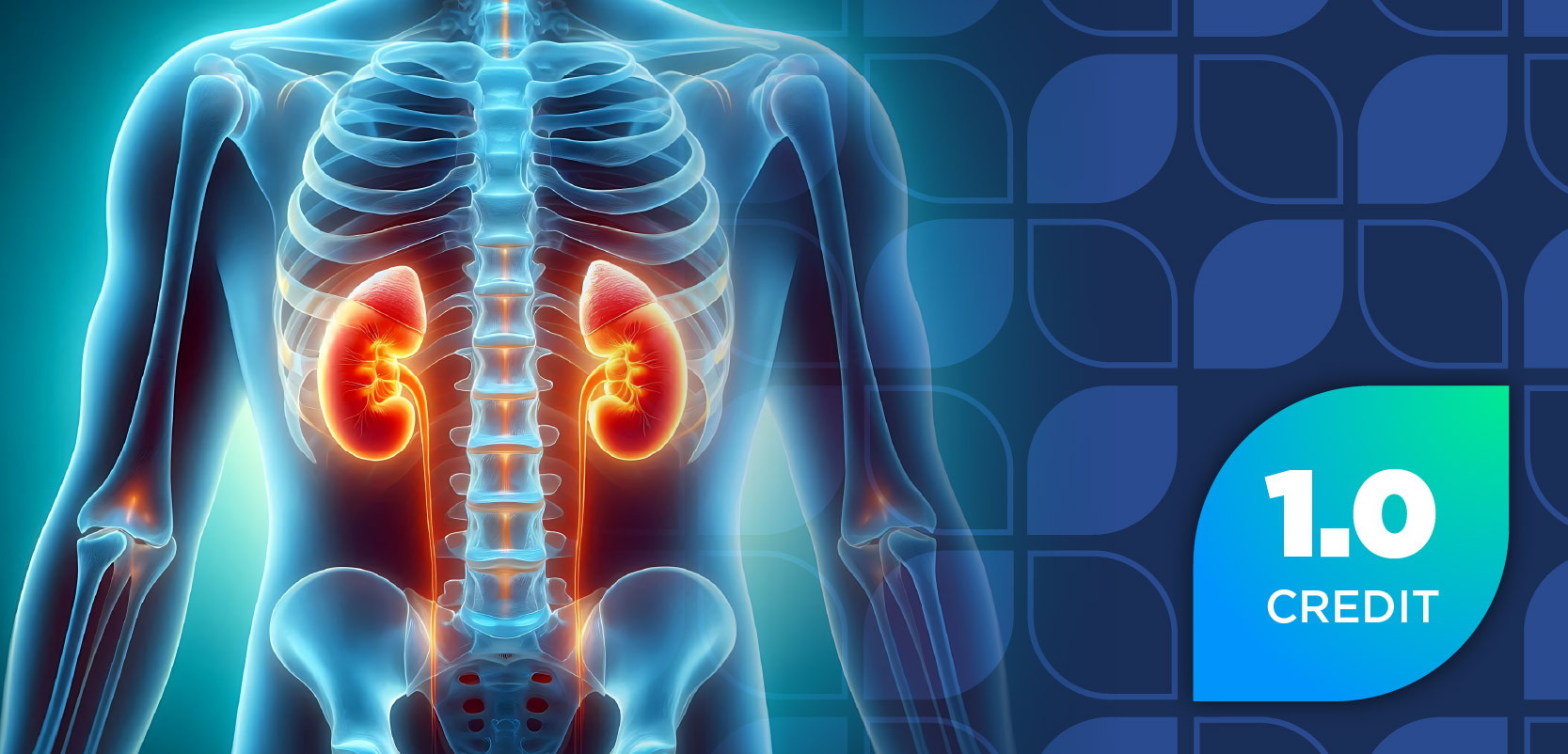
High Burden of Pneumococcal Disease Found in Older Adults With Underlying Medical Conditions
Key Takeaways
- Older adults with UMCs face a high burden of pneumococcal disease, despite vaccination eligibility, highlighting the need for increased vaccination efforts.
- Chronic conditions like COPD, heart disease, asthma, and diabetes significantly heighten the risk of PD, leading to adverse outcomes.
Data from a retrospective study of adults in France found the highest incidence of pneumococcal disease in patients with the highest risk underlying medical conditions.
New data from a retrospective cohort study published by investigators in Human Vaccines & Immunotherapies indicates a high burden of pneumococcal disease (PD) due to inpatient PD among older adults with underlying medical conditions (UMCs) despite their eligibility for pneumococcal vaccination, emphasizing the need for greater efforts to incentivize vaccination.1
Risks to Individuals With UMCs From PD
Like most viral illnesses, PD—which can include both invasive PD (IPD) and community-acquired pneumonia—poses a heightened risk to patients with UMCs, especially chronic conditions. These most prominently include individuals with chronic obstructive pulmonary disease (COPD), chronic heart disease, asthma, and diabetes, in addition to those with a smoking history. Investigators have determined that these conditions can lead to short- and long-term adverse outcomes.2
The risk of PD to older adults has been solidified in numerous studies. With the introduction of pneumococcal conjugate vaccines (PCV) among the general populace, there was a decrease in the prevalence of PD, especially in France. But over the past decade, there has been an upward trend of IPD across all ages, especially in children 2 years and younger and adults 65 years and older. Importantly, in France, IPD-associated mortality is estimated to be 10% to 30%, with increases according to age or presence of risk factors.1,3,4
Recommendations for adults with UMCs to receive a pneumococcal vaccination have been continuously updated since the first PCV was disseminated to the French public. A single dose of 20-valent PCV (PCV20) is recommended in all adults 65 years or older, regardless of their risk status. Despite the clear recommendations and known risk of PD, pneumococcal vaccination coverage in France is severely lacking, with one study finding that only 4.5% of all at-risk adults were vaccinated.1,5
Pneumococcal Burden is Immense in Adults With Underlying Medical Conditions
In this retrospective cohort trial, the study authors sought to fill the present holes in the understanding of PD and its impact on the French public, especially those with UMC who may not be vaccinated. The current study utilized data from France’s national health care data system to determine patterns of pneumococcal vaccination and estimate the clinical burden of PD according to age and health risk.1
For risk group distribution protocols, the investigators comprised the high-risk group with those harboring immunocompromising conditions; the medium-risk group with immunocompetent adults with chronic UMCs that increase their likelihood of PD; and the no- or low-risk group, which included adults younger than 65 years without UMCs or adults 65 years or older without a UMC. The authors estimated that, following the application of inclusion criteria, 75% of the targeted inpatient PD/UMC population was ultimately covered in the population. The population of patients with UMCs included 7,947,622, regardless of whether they had PD; 42,466 inpatient PD episodes were recorded, whereas the PD population comprised 41,855 patients.1
In the UMC population, over half of the individuals were 65 years or older, with 30.7% classified as high-risk and 69.3% considered medium risk. Most individuals considered medium- or high-risk had 1 UMC, with most being classified as medium-risk UMCs. Common UMCs identified included diabetes, autoimmune illness, or chronic inflammatory disease.1
Incidence of inpatient PD episodes per 100,000 person-years in the UMC population was 121.98 (95% CI, 120.63-123.34); in individuals with a UMC, the incidence of PD was 28.53 (95% CI, 27.88-29.19). For high-risk patients, the incidence was 165.77, whereas for medium-risk patients, the incidence of inpatient PD was 102.45 per 100,000 person-years. Unsurprisingly, the highest rate of inpatient PD episodes per 100,000 person-years was highest in individuals 65 years and older.1
Regarding all-cause and PD-related mortality, the investigators found an estimated all-cause mortality rate following the first inpatient PD episode of 12.3% (95% CI, 12.0-12.7) at 1 month. This increased to 26.5% (95% CI, 26.0-26.9) at 12 months, according to the investigators. All-cause mortality at 12 months was highest in those considered high-risk (29.6% [95% CI, 28.8-30.3]), followed by medium-risk (29.7% [95% CI, 29.0-30.5]) and no- or low-risk individuals [17.7% [95% CI, 16.9-18.4]).1
The study investigators noted that their current findings align with those from previous studies, confirming the increased risk of PD in patients as they increase in age and if they develop UMCs.1
“Taken together, these studies all provide compelling evidence supporting the association between advanced age and higher PD-related mortality rates as well as unfavorable PD outcomes experienced by individuals who were ineligible for vaccination under the previous risk-based program in France,” the study authors concluded. “This underscores the importance of early diagnosis, appropriate management, and targeted preventive strategies, such as expanded vaccination programs, for older individuals who are at a higher risk of pneumococcal infections and mortality.”1
REFERENCES
1. Bailey MD, Farge G, Mohanty S, et al. Clinical burden of pneumococcal disease among adults in France: A retrospective cohort study. Human Vaccines & Immunotherapies. 2025;21(1):2515760. doi:10.1080/21645515.2025.2515760
2. Torres A, Blasi F, Dartois N, Akova M. Which individuals are at increased risk of pneumococcal disease and why? Impact of COPD, asthma, smoking, diabetes, and/or chronic heart disease on community-acquired pneumonia and invasive pneumococcal disease. Thorax. 2015;70(10):984-989. doi:10.1136/thoraxjnl-2015-206780
3. Santé Publique France. Infections invasives à pneumocoques : impact de la vaccination par le vaccinpneumococcique conjugué 13-valent (VPC13); 2021. https://www.santepubliquefrance.fr/maladies-et-traumatismes/maladies-et-infections-respiratoires/infections-a-pneumocoque/documents/bulletin-national/bilan-annuel-2019-impact-de-la-vaccination-par-le-vaccin-pneumococcique-conjugue-13-valent-vpc13.
4. Santé Publique France. Infections à pneumocoque; 2025. https://www.santepubliquefrance.fr/maladies-et-traumatismes/maladies-et-infections-respiratoires/infections-a-pneumocoque.
5. Wyplosz B, Fernandes J, Sultan A, et al. Pneumococcal and influenza vaccination coverage among at-risk adults: A 5-year French national observational study. Vaccine. 2022;40(33):4911-4921. doi:10.1016/j.vaccine.2022.06.071
Newsletter
Stay informed on drug updates, treatment guidelines, and pharmacy practice trends—subscribe to Pharmacy Times for weekly clinical insights.

















































































































































































































